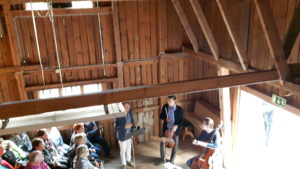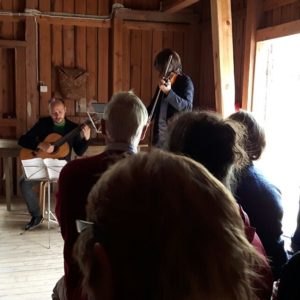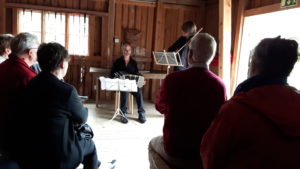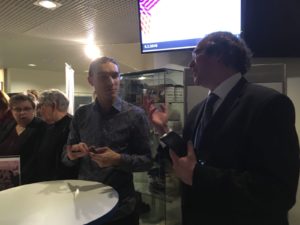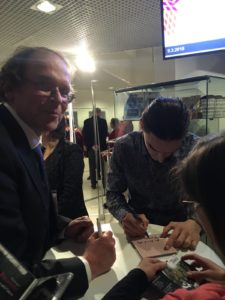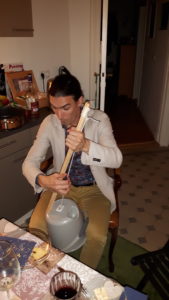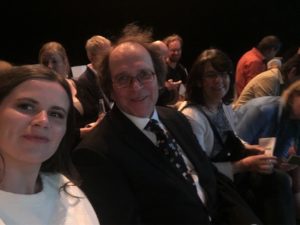Learning Toolbox goes (to) ECER – Welcome ePosters prepared with EERA-Toolbox
One of the most successful spin-offs from our EU-funded Learning Layers (LL) project has been the use of the Learning Toolbox (LTB) in conferences to prepare ePosters. As regular readers of this blog know, I have covered the work of the project and its construction pilot since 2012. And in the recent years (during final phase of the project and in the follow-up phase) I have written a lot of the flexible mobile toolset that was named “Learning Toolbox( LTB)” since it was designed to support vocational and workplace learning in the construction sector. BUT one of its most interesting applications has been the preparation of ePosters as an alternative for traditional paper posters. And, as I have written (somewhat enviously), our colleagues have been successful in introducing it to conferences of medical educators (AMEE), dentist educators (ADEE) and educational technologists (EC-TEL). However, now it is the time to announce that LTB will be introduced into our field – to the European Conference on Educational Research (ECER) in the annual conference of the European Educational Research Association (EERA) that will take place in September 2018 in Bolzano/Bozen in Italy. Below I will give a brief report how this has come into being and what we are doing next week in the conference.
The two proposals: a special EERA session and the VETNET network project
During the preparation of the ECER 2018 we (the VETNET network) prepared two proposals. Firstly, we proposed to have a specific EERA-wide session to promote awareness on the usaes of LTB for shaping ePosters in research conferences. Parallel to this we prepared a proposal for an EERA-funded “Network project” to be implemented by the VETNET network. Both proposals were linked to the idea to organise an interactive VETNET poster session in which the authors would presented their posters as ePosters within the VETNET programme. We were happy to see that the proposals were approved by the EERA authorities and that we could go ahead with the initiative.
The preparation of the VETNET pilot with ePosters
During the preparation phase the LTB developers prepared a special web page “FAQ ECER” in whch they gave all possible advice for the conference participants who had proposed posters for the ECER programme. With short instruction videos and with a well edited Webinar recording the authors were advised, how to enrich their original posters into ePosters by using the LTB.
Getting ready for the conference
During the last few weeks we have made the positive experience that all authors have been able to make use of the LTB and prepared their own ePosters. Now they are available on the page “EERA showcase“.
In addition, I have prepared my presentation for the EERA session (on the research background and usability of the LTB) also as an ePoster (or hybrid presentation) using the LTB. And furthermore, I have prepared my presentation “Transfer of Innovation after the Learning Layers” also as an ePoster (or hybrid presentation) with the help of LTB – or as we could call it in this context “the EERA-Toolbox”.
So, we have done quite a bit of work to bring the ePosters to the ECER 2018 and to demonstrate that the EERA could follow the example of other conference organisers. We are eagerly looking forward, how our pilot sessions will be received and what kind of feedback we will get from the authors and the audience. I will surely report on that in a short while.
More blogs to come …
 After years of running down apprenticeship schemes through a policy focus on mass university education, the UK, in common with other European countries, has in the past few years turned back to apprenticeship both as a strategy for providing the skills needed in the changing economy and as a way of overcoming youth unemployment especially or those with low school attainment.
After years of running down apprenticeship schemes through a policy focus on mass university education, the UK, in common with other European countries, has in the past few years turned back to apprenticeship both as a strategy for providing the skills needed in the changing economy and as a way of overcoming youth unemployment especially or those with low school attainment. For years, Jenny Hughes and I have been promising ourselves to submit a paper for the Academic Archers Conference. And this year we have finally got our act together. You can read the short abstract below. But first, for non UK readers what is the Archers? According to Wikipedia:
For years, Jenny Hughes and I have been promising ourselves to submit a paper for the Academic Archers Conference. And this year we have finally got our act together. You can read the short abstract below. But first, for non UK readers what is the Archers? According to Wikipedia: